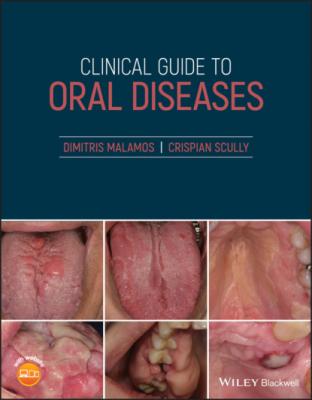Clinical Guide to Oral Diseases. Crispian Scully
Читать онлайн.| Название | Clinical Guide to Oral Diseases |
|---|---|
| Автор произведения | Crispian Scully |
| Жанр | Медицина |
| Серия | |
| Издательство | Медицина |
| Год выпуска | 0 |
| isbn | 9781119328155 |
The more common causes of halitosis are listed in Table 4.
Figure 4.0a Halitosis from a patient with advanced oro‐nasal carcinoma.
Figure 4.0b Halitosis from a patient with a neglected mouth.
Table 4 Common and important conditions associated with malodor
| Malodor |
| Physical causesFood or fluid ingredientsOnions/garlicFoodstuffs/additivesSpiceAlcoholFood or fluid lackStarvation or dehydrationHabitsSmokingHeavy drinkingLocal causesRelated with the mouthCariesAcute ulcerative gingivitisPericoronitisChronic periodontitisChronic dental abscessOsteonecrosismyelitisMedicated osteonecrosis (due to bisphosphonates, denosumab, bevacizumab)Dry socketNomaOroantral fistulaSinusitisUlcerations, i.e. pemphigus vulgaris (PV)SialdenitisNeoplasmsRelated with pharynx/esophagusTonsillitisEsophangeal infectionrefluxpouchNeoplasmsSystemic causes Diseases fromliverHepatic failureKidneyRenal failureLungsInfectionsBronchiectasisNeoplasmsGutGastric regurgitationCNSTemporal lobe epilepsyTemporal lobe tumorsDelusionsMetabolismTrimethylaminuriaDrugsAssociated with xerostomiaAntihistaminesDiureticsNarcoticsAntidepressantsDecongestantsAntihypertensiveAntipsychotics |
Case 4.1
CO: A 43‐year‐old woman presented with halitosis and severe pain in the area of a recent extraction.
HPC: The pain started immediately after a difficult extraction of a severely decayed second lower molar, becoming even more intense over the following three days and radiating toward the ipsilateral upper molars and ear. One day later, a bad rotten smell coming from her mouth was noted and remained unchanged at her last dental examination.
PMH: Her medical history did not reveal any serious diseases or drug uptake, and her dental history recorded only occasional visits to her GDP for dental pain relief. Smoking (>25 cigarettes daily) was reported.
OE: Oral mucosa did not show any oral lesions apart from erythematous and tender gingivae around the socket of the extracted molar. The socket was empty of clot and showed a partially exposed alveolar bone which was covered with debris and saliva (Figure 4.1). Pain was coming from the socket and was exacerbated with probing. No evidence of a dental abscess, facial swelling or cervical lympho‐adenopathy was noticed, except that a bad, rotten smell was arising from the socket. Her mouth and dentition was neglected and many decayed teeth and roots due to her poor oral hygiene were recorded.
Q1 What is the cause of her bad breath?
1 Tooth avulsion
2 Intra‐alveolar carcinoma
3 Dry socket
4 Metastatic tumors
5 Osteonecrosis induced by drugs
Answers:
1 No
2 No
3 Dry socket or alveolar osteitis is the cause and is the most common complication after a tooth extraction. It is characterized by the absence of blood clot within the socket due to its incomplete formation, disintegration, or removal. The empty socket can be easily infected and inflammatory products could activate pain, taste, and smell receptors thus causing pain, dysgeusia, and halitosis.
4 No
5 No
Comments: The lack of severe trauma on either mouth or head excludes tooth avulsion, while the severe symptomatology despite its short duration rules out intra‐alveolar carcinomas and metastatic tumors from diagnosis. Osteochemonecrosis is not the cause, as the lady was not under any medications such as biphosphonates which could be responsible for bony necrosis.
Q2 Which is/or are the main predisposing factors for this condition?
1 Preexisting infection
2 Anemia
3 Poor oral hygiene
4 Smoking
5 Vitamin deficiency
Answers:
1 Preexisting inflammation of the teeth or gingivae cause inflammation and disintegration of the blood clot.
2 No
3 Poor oral hygiene allows pathogenic germs to inoculate and grow into the socket of a recently extracted tooth, causing inflammation and lysis of the clot as well as necrosis of adjacent alveolar bone.
4 The sucking action of cigarette smoking dislodges the clot from the socket while at the same time, the smoking chemical, i.e. nicotine, causes local vasoconstriction thus delaying the healing.
5 No
Comments: Severe anemia, especially due to iron or vitamin deficiency, causes low oxygen compilation in the tissues, and indirectly may halt or delay wound healing stages increasing the risk of local infection and secondarily the disintegration of the clot.
Q3 Which is/or are the complication(s) of an untreated dry socket?
1 None
2 Osteomyelitis
3 Low quality of life
4 Increased risk of malignant transformation
5 Paresis of the trigeminal nerve
Answers:
1 No
2 Osteomyelitis is an infection (acute or chronic) of the bone marrow of the mandible or maxilla, induced by various bacteria or fungi, that occurs after a local trauma or difficult extractions, and rarely from dry sockets.
3 Dry socket is characterized by an intense pain which often interferes with the patient's work or social activities in the community, thus reducing his quality of life.
4 No
5 No
